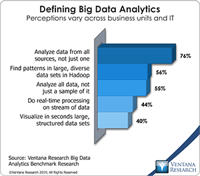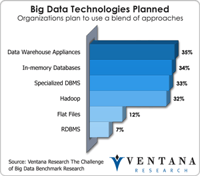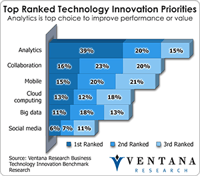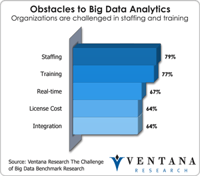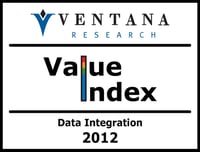Many businesses are close to being overwhelmed by the unceasing growth of data they must process and analyze to find insights that can improve their operations and results. To manage this big data they find a rapidly expanding portfolio of technology products. A significant vendor in this market is SAS Institute. I recently attended the company’s annual analyst summit, Inside Intelligence 2014 (Twitter Hashtag #SASSB). SAS reported more than $3 billion in software revenue for 2013 and is known...
Read More
Topics:
Big Data,
Predictive Analytics,
SAS,
Event Stream,
Operational Performance Management (OPM),
Analytics,
Business Analytics,
Business Intelligence,
CIO,
Data Management,
Information Management,
Location Intelligence,
Operational Intelligence,
Business Performance Management (BPM),
Customer Performance Management (CPM),
Discovery,
Information Applications (IA),
Information Management (IM)
Teradata recently gave me a technology update and a peek into the future of its portfolio for big data, information management and business analytics at its annual technology influencer summit. The company continues to innovate and build upon its Teradata 14 releases and its new processing technology. Since my last analysis of Teradata’s big data strategy, it has embraced technologies like Hadoop with its Teradata Aster Appliance, which won our 2012 Technology Innovation Award in Big Data....
Read More
Topics:
Big Data,
MicroStrategy,
SAS,
Tableau,
Teradata,
Customer Excellence,
Operational Performance Management (OPM),
Analytics,
Business Analytics,
Business Intelligence,
CIO,
Cloud Computing,
In-Memory Computing,
Location Intelligence,
Operational Intelligence,
CMO,
Customer Performance Management (CPM),
Discovery,
Information Applications (IA),
Information Management (IM),
Intelligent Memory,
Teradata Aster,
Strata+Hadoop
I recently attended the annual SAS analyst summit to hear the latest company, product and customer growth news from the multi-billion-dollar analytics software provider. This global giant continues to grow its business and solutions to help with fraud prevention, marketing and risk. It lets users apply its analytic and statistical technology in practical applications for business. SAS can meet midsized businesses’ demand with packaging and pricing to ensure it is not seen as only affordable to...
Read More
Topics:
Big Data,
Predictive Analytics,
SAS,
Fraud,
GRC,
Operational Performance Management (OPM),
Analytics,
Business Analytics,
Business Intelligence,
CIO,
Cloud Computing,
Data Integration,
Governance, Risk & Compliance (GRC),
Information Management,
Operational Intelligence,
Business Performance Management (BPM),
Customer Performance Management (CPM),
Financial Performance Management (FPM),
Information Applications (IA),
Information Management (IM),
Risk,
Sales Performance Management (SPM)
At the recent Teradata’s annual Partners user conference, the company outlined its expanding role as a provider distributed information architecture technology. My colleague Tony Cosentino assessed Teradata’s business analytics and big data strategy, but there is more under the covers in regards to the company’s expanding role for big data and enterprise architectures. Over the last several decades Teradata has been known for providing enterprise data warehouse appliances, such as its unveiling...
Read More
Topics:
Big Data,
QlikView,
SAS,
alteryx,
Business Analytics,
Hortonworks,
Information Management,
Location Intelligence,
Operational Intelligence,
Information Management (IM),
IT Performance Management (ITPM),
Strata+Hadoop
Ventana Research has just released the 2012 Value Index for Data Integration, in which we evaluate the competency and maturity of vendors and products. Our firm has been researching this software category for almost a decade. Our latest benchmark research in information management found that data integration is a critical component of information management strategies, according to 55 percent of organizations. Our benchmark research on organizations using this software not only uncovers best...
Read More
Topics:
Big Data,
Master Data Management,
Microsoft,
Pentaho,
SAP,
SAS,
Social Media,
Talend,
Operational Performance Management (OPM),
SnapLogic,
Business Analytics,
Business Collaboration,
Business Mobility,
Cloud Computing,
Data Governance,
Data Integration,
Governance, Risk & Compliance (GRC),
IBM,
Informatica,
Information Builders,
Information Management,
Location Intelligence,
Oracle,
Business Performance Management (BPM),
Customer Performance Management (CPM),
Financial Performance Management (FPM),
Information Applications (IA),
Information Management (IM),
IT Performance Management (ITPM),
Sales Performance Management (SPM),
Supply Chain Performance Management (SCPM),
Syncsort,
Workforce Performance Management (WPM)
The just-concluded SAS Institute analyst summit (Twitter: #SASSB) provided the annual update on the company’s performance, strategy, products and customers. My analysis of last year’s event talked about its continuation of its product roadmap to new customer acquisition and the broadening of its underlying platform, applications and vertical solutions. SAS is no small-time mover and shaker when it comes to the analytics industry; it extends from technology to tools and applications across...
Read More
Topics:
SAS,
Social Media,
Fraud,
Operational Performance Management (OPM),
Analytics,
Business Intelligence,
Business Technology,
CIO,
Collaboration,
Enterprise Software,
Information Technology,
Mobility,
Operational Intelligence,
Business Performance Management (BPM),
Financial Performance Management (FPM),
Information Management (IM),
IT Performance Management (ITPM),
Risk,
Sales Performance Management (SPM),
Supply Chain Performance Management (SCPM),
Workforce Performance Management (WPM)
The just-concluded SAS Institute analyst summit (Twitter: #SASSB) provided the annual update on the company’s performance, strategy, products and customers. My analysis of last year’s event talked about its continuation of its product roadmap to new customer acquisition and the broadening of its underlying platform, applications and vertical solutions. SAS is no small-time mover and shaker when it comes to the analytics industry; it extends from technology to tools and applications across...
Read More
Topics:
SAS,
Social Media,
Fraud,
Operational Performance Management (OPM),
Analytics,
Business Intelligence,
Business Mobility,
Business Technology,
CIO,
Collaboration,
Enterprise Software,
Information Technology,
Operational Intelligence,
Business Performance Management (BPM),
Customer Performance Management (CPM),
Financial Performance Management (FPM),
Information Management (IM),
IT Performance Management (ITPM),
Risk,
Sales Performance Management (SPM),
Supply Chain Performance Management (SCPM),
Workforce Performance Management (WPM)
